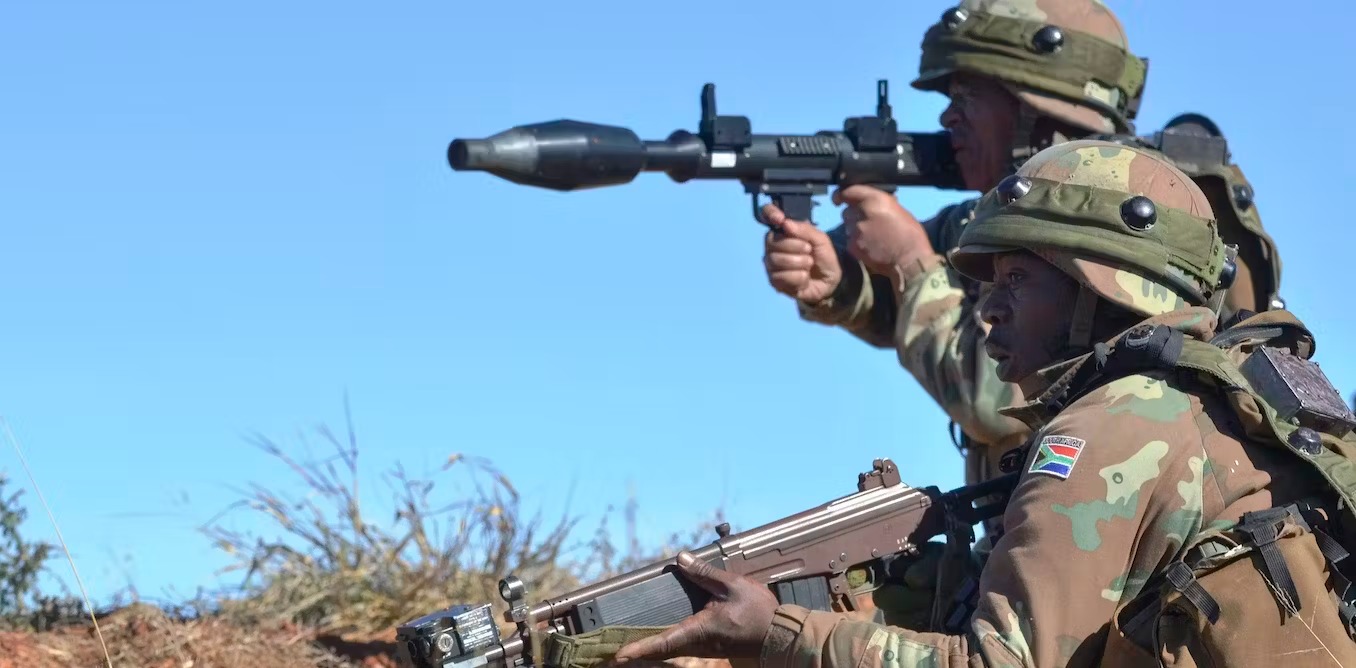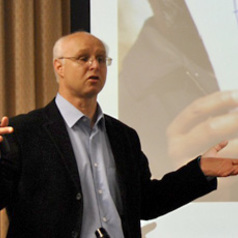The South African National Defence Force marks 30 years this year, having been established on 27 April 1994. It’s as old as the country’s constitutional democracy, the result of a negotiated political settlement that ended apartheid. The defence force consists of the army, air force, navy, and military health service.
It’s an amalgamation of the former apartheid era South African Defence Force, the militaries of the former nominally independent Bophuthatswana, Transkei, Ciskei and Venda, and the former liberation armies of the African National Congress and the Pan Africanist Congress of Azania. It’s currently ranked third in Africa, after Egypt and Algeria.
Where does the defence force find itself after three decades? How does it measure up to its mandate of defending the country against external aggression, promoting security externally and internally, and supporting the population and government as needed?
The defence force has been expected to safeguard the country against external threats while simultaneously responding to political calls to assist with peace and security operations in other African countries. It has also been called on to support the South African Police Service in policing a crime-ridden society.
A mismatch has developed between what is expected of the military, and its budget and capabilities. Its budget declined to about 1% of gross domestic product (GDP) in the past decade. This is far too low compared to global average military spending of 2.2% of GDP.
As a researcher who has studied the defence force as a foreign policy instrument for almost three decades, I’m not surprised it is often described as “institutionally overstretched”. It has been in decline for some time, especially since 2000, as its budgetary allocation from treasury has shrunk.
Figuring out its primary role
The government’s policies after 1994 committed the defence force primarily to safeguarding the country’s sovereignty and territorial integrity. The purchasing of new military equipment was based on the South African Defence Review of 1998. The review elaborated on the 1996 White Paper for Defence on such matters as posture, doctrine, force design, force levels, logistical support,
This White Paper stipulated that the force design should be a high-technology core force, sized for peacetime, but expandable to meet any emerging threat. To this end, cabinet decided in November 1998 to buy new military equipment. This was the infamous arms deal, mired in corruption. The equipment included nine Gripen fighter aircraft, 12 Hawk aircraft, 30 light utility helicopters, four patrol corvettes and three submarines.
Critics felt that the corvettes, submarines and Gripen jet fighters could be regarded as offensive weapons. That would not align with South Africa’s foreign policy, specifically pertaining to participation in international peace missions with the emphasis on cooperative defence and regional peacekeeping.
It was eventually decided that the defence force should be designed primarily to protect the country from external enemies. It would also promote peace and security in Africa, as secondary functions.
Things have not quite panned out that way. Since 1998, the defence force has featured prominently as an instrument in South Africa’s foreign policy. Its so-called secondary functions have become the primary function. But it has received no additional armour and personnel for this additional role.
The post-1994 government sought to rid the country of its apartheid-era image of being a pariah and a destabilising factor in its neighbourhood. Instead, it was to be identified with the promotion of human rights, peace and development in Africa.
The force became the fifth largest troop-contributing nation to the UN’s peacekeeping operation in the eastern Democratic Republic of Congo (DRC). It also plays a pivotal role in the Southern African Development Community mission in conflict-ridden northern Mozambique.
It has been in the DRC since 1999. This UN mission will now be terminated after more than 24 years, and be replaced by troops from the Southern African Development Community, led by the South African National Defence Force.
But soldiers in the field haven’t always received good logistical support, especially in Mozambique. And poor coordination with the Department of International Relations and Cooperation has sometimes left the country embarrassed.
Among other peacekeeping missions, since 1994 the defence force has also been deployed to:
-
Lesotho, 1998: restoring democracy and political stability, supported by the Botswana military
-
Burundi, 2003: peacekeeping alongside Mozambique and Ethiopia as part of the African Union Mission in Burundi
-
Sudan, 2005: as part of the United Nations–African Union Mission in Darfur.
Constraints
Budgetary constraints have posed a growing challenge. Between 1995 and the 1998 the defence budget was cut by 11.1%.
In 2015, the defence force was 24% underfunded in terms of its size and shape. Defence spending in 2022/23 was 8.4% lower than in 2021, and 21% lower than in 2013.
The country’s ailing economy and low growth put severe pressure on government finances.
Because of the budgetary constraints, the serviceability and functionality of high-tech equipment – especially the Gripens, frigates and submarines – couldn’t be sustained.
The hollowing out of the armed forces was laid bare in 2023. The defence minister, Thandi Modise, disclosed that a staggering 85% of the air force’s aircraft fleet was out of action, leaving the country vulnerable to external security threats.
By 2013, only two of the 26 Gripen fighter aircraft and three of the 24 Hawk aircraft were available for service.
The funding crisis is so severe that some defence analysts are now proposing to reduce the air force to a mere air wing of the defence force, which would have fewer than 75 aircraft.
The navy is in no better position. All frigates, the navy’s primary combat and patrol vessels, are in urgent need of repair. The three submarines that were part of the 1999 arms deal also came with a limited number of spare parts, like the frigates. Sometimes none of the submarines are serviceable.
Problems at home
Border protection and support for police operations are now some of the force’s main activities. These include internal or domestic operations such as helping the police in combating gang warfare, fighting illegal mining syndicates, preventing the torching of commercial trucks, guarding power plants, and combating cash-in-transit heists. These responsibilities can now even be regarded as among the military’s primary functions.
Two issues drive the increased role in domestic security. One is the declining capacity of the police. Secondly, politicians see the military as an instrument for policing roles and other functions – all contributing to the degeneration of South Africa’s defence capability.



 Australia Defends Aluminium Exports Amid U.S. Tariff Concerns
Australia Defends Aluminium Exports Amid U.S. Tariff Concerns  Germany’s Trade Surplus with U.S. Hits Record as Trump Threatens Tariffs
Germany’s Trade Surplus with U.S. Hits Record as Trump Threatens Tariffs  Fines for term-time holidays are at record levels – this will further erode trust between parents and schools
Fines for term-time holidays are at record levels – this will further erode trust between parents and schools  Do investment tax breaks work? A new study finds the evidence is ‘mixed at best’
Do investment tax breaks work? A new study finds the evidence is ‘mixed at best’  Elon Musk Calls for Treasury Reforms After Court Blocks Access
Elon Musk Calls for Treasury Reforms After Court Blocks Access  Gold Soars to New Heights: Trading Strategies Amid Tariff Turmoil
Gold Soars to New Heights: Trading Strategies Amid Tariff Turmoil  Wall Street Closes Mixed as Apple Gains, Tesla Slumps
Wall Street Closes Mixed as Apple Gains, Tesla Slumps  Gold Shrugs Off Inflation, Aims Higher
Gold Shrugs Off Inflation, Aims Higher  USD Stabilizes as Trump Holds Off Immediate Tariffs
USD Stabilizes as Trump Holds Off Immediate Tariffs  Thailand’s Economy Sees Strongest Growth in Over Two Years Amid Tourism Surge
Thailand’s Economy Sees Strongest Growth in Over Two Years Amid Tourism Surge  Gold Prices Hit All-Time High Despite Strong US Dollar Amid Tariff Concerns
Gold Prices Hit All-Time High Despite Strong US Dollar Amid Tariff Concerns 
































